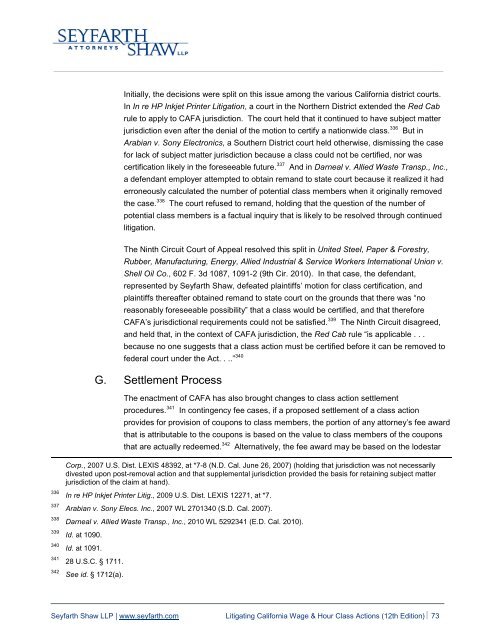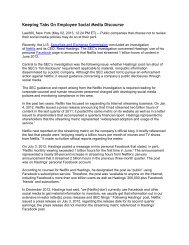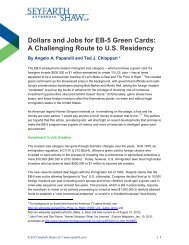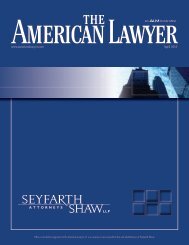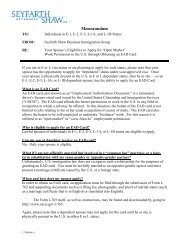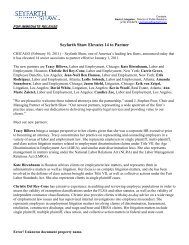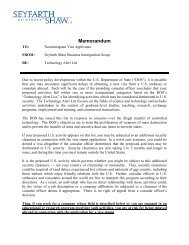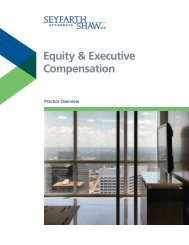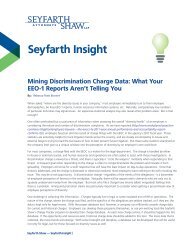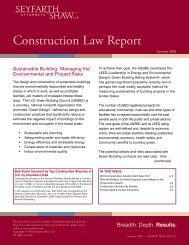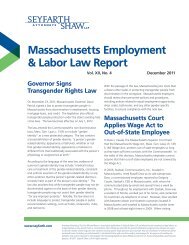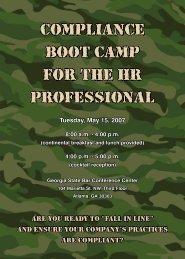Litigating California Wage & Hour and Labor Code Class Actions
Litigating California Wage & Hour and Labor Code Class Actions
Litigating California Wage & Hour and Labor Code Class Actions
Create successful ePaper yourself
Turn your PDF publications into a flip-book with our unique Google optimized e-Paper software.
Initially, the decisions were split on this issue among the various <strong>California</strong> district courts.<br />
In In re HP Inkjet Printer Litigation, a court in the Northern District extended the Red Cab<br />
rule to apply to CAFA jurisdiction. The court held that it continued to have subject matter<br />
jurisdiction even after the denial of the motion to certify a nationwide class. 336 But in<br />
Arabian v. Sony Electronics, a Southern District court held otherwise, dismissing the case<br />
for lack of subject matter jurisdiction because a class could not be certified, nor was<br />
certification likely in the foreseeable future. 337 And in Darneal v. Allied Waste Transp., Inc.,<br />
a defendant employer attempted to obtain rem<strong>and</strong> to state court because it realized it had<br />
erroneously calculated the number of potential class members when it originally removed<br />
the case. 338 The court refused to rem<strong>and</strong>, holding that the question of the number of<br />
potential class members is a factual inquiry that is likely to be resolved through continued<br />
litigation.<br />
The Ninth Circuit Court of Appeal resolved this split in United Steel, Paper & Forestry,<br />
Rubber, Manufacturing, Energy, Allied Industrial & Service Workers International Union v.<br />
Shell Oil Co., 602 F. 3d 1087, 1091-2 (9th Cir. 2010). In that case, the defendant,<br />
represented by Seyfarth Shaw, defeated plaintiffs’ motion for class certification, <strong>and</strong><br />
plaintiffs thereafter obtained rem<strong>and</strong> to state court on the grounds that there was “no<br />
reasonably foreseeable possibility” that a class would be certified, <strong>and</strong> that therefore<br />
CAFA’s jurisdictional requirements could not be satisfied. 339 The Ninth Circuit disagreed,<br />
<strong>and</strong> held that, in the context of CAFA jurisdiction, the Red Cab rule “is applicable . . .<br />
because no one suggests that a class action must be certified before it can be removed to<br />
federal court under the Act. . ..” 340<br />
G. Settlement Process<br />
The enactment of CAFA has also brought changes to class action settlement<br />
procedures. 341 In contingency fee cases, if a proposed settlement of a class action<br />
provides for provision of coupons to class members, the portion of any attorney’s fee award<br />
that is attributable to the coupons is based on the value to class members of the coupons<br />
that are actually redeemed. 342 Alternatively, the fee award may be based on the lodestar<br />
336<br />
337<br />
338<br />
339<br />
340<br />
341<br />
342<br />
Corp., 2007 U.S. Dist. LEXIS 48392, at *7-8 (N.D. Cal. June 26, 2007) (holding that jurisdiction was not necessarily<br />
divested upon post-removal action <strong>and</strong> that supplemental jurisdiction provided the basis for retaining subject matter<br />
jurisdiction of the claim at h<strong>and</strong>).<br />
In re HP Inkjet Printer Litig., 2009 U.S. Dist. LEXIS 12271, at *7.<br />
Arabian v. Sony Elecs. Inc., 2007 WL 2701340 (S.D. Cal. 2007).<br />
Darneal v. Allied Waste Transp., Inc., 2010 WL 5292341 (E.D. Cal. 2010).<br />
Id. at 1090.<br />
Id. at 1091.<br />
28 U.S.C. § 1711.<br />
See id. § 1712(a).<br />
Seyfarth Shaw LLP | www.seyfarth.com <strong>Litigating</strong> <strong>California</strong> <strong>Wage</strong> & <strong>Hour</strong> <strong>Class</strong> <strong>Actions</strong> (12th Edition) 73


